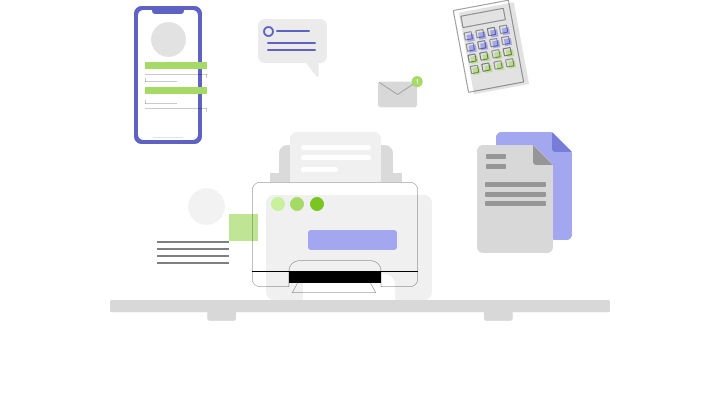
Accounts recorded in these financial statements fall in either of the four categories i.e., revenue or expense and assets or liabilities. Revenues and assets are represented by current or future inflows whereas expenses and liabilities by current or future outflows. A liability is an obligation or debt a business must pay in the future. It can arise from loans, services received but not paid for, or any other financial expenses vs liabilities obligation. Liabilities are essential for understanding a company’s financial health and future cash flow needs.
- They’re like the decoder rings to a company’s secrets, telling us all we need to know about its health and performance.
- It reduces your net income, which is the money you make after paying all your expenses.
- I hope this article has helped you clarify this confusing topic.
- Think of them as the scorecard of a company’s financial responsibilities.
- Liabilities are debts or financial obligations that a business owes to outside parties, such as vendors or suppliers.
What Is the Order of Payment in Liquidation?
Other examples of current liabilities include wages payable, dividends payable, interest payable and unearned revenues—money received in advance for services yet to be completed. Common types of liabilities include current liabilities, noncurrent liabilities (also known as long-term liabilities) and contingent liabilities. For instance, a company is unable to afford to pay cash to purchase its monthly office supplies. It then decided gym bookkeeping to take out a loan to pay for these expenses which then becomes a liability. The company will, however, still continue to track expenses monthly on its income statement to determine the net income.
- Both income and state taxes are due within one year, making them short-term liabilities.
- Imagine your company as a ship navigating the choppy waters of the business world.
- An expense is the cost of operations that a company incurs to generate revenue.
- Salvan Manufacturing, LLC, pays for their usage of electricity utilities on a quarterly basis.
Liabilities vs Expenses: Impact on Financial Statements
- What’s the difference between a business expense and a business liability?
- In accounting, liabilities refer to the financial obligations or debts that your company owes to external parties, such as lenders, suppliers, or even employees.
- One of the best ways to avoid these kinds of mistakes is by automating the process.
- Also, expenses are more immediate in nature and are paid on a regular basis.
Any adjustments that are required are used to document goods and services that have been delivered but not yet billed. Liabilities are listed on a company’s balance sheet and expenses are listed on a company’s income statement. Expenses can be paid immediately with cash or the payment could be delayed which would create a liability.
Conclusion – expense vs liability
An expense is the cost of operations that a company incurs to generate revenue. Non-current liabilities are long-term obligations that extend beyond a year, such as bonds payable or long-term leases. What’s the difference between a business expense and a business liability?
- These obligations are legally enforceable claims against an entity’s assets.
- If the service period and payment occur within a span of 12 months, then the accrued liability is classified as short-term.
- Similarly, long-term loans represent borrowed funds that need to be repaid over an extended period.
- According to the accounting equation, the total amount of liabilities must equal the difference between the total assets and equity.
- The total amount of liabilities shows how much of the company’s assets are financed through debt.
- For example, paying less for advertising reduces costs/expenses but lowers the company’s visibility and ability to reach out to potential customers.
Operating expenses are like the fuel that keeps your ship chugging along, but understanding their significance is crucial to steer your vessel towards success. They show you where your money is going and how profitable your lemonade stand is. By analyzing expenses, you can find ways to cut costs, improve efficiency, and make more lemonade money.
How Liabilities and Expenses Differ and Connect

Under the accrual basis, expenses should be recognized during the period or periods when they are incurred, regardless of when they are paid. Liability accounts are crucial for understanding a company’s financial health. They show how much money a company owes, when those debts are due, and how those debts affect the company’s cash flow.
How to calculate total assets
Likewise, for a prepaid expense, the company may make a prepayment in full for a service that is actually incurred over a period of several months. In both cases, the expenses would be recognized over the full usage period and not necessarily when they are actually paid. Accrued expenses are the total liability that’s payable for goods and services consumed or received by the company. All companies have accrued expenses, but they reflect costs for which an invoice or bill hasn’t yet been received.
Unlike expenses, liabilities do not directly impact a company’s profitability. Instead, they reflect the company’s financial obligations and its ability to meet those obligations in the future. Liabilities are typically measured in monetary terms and are reported on the balance sheet, providing stakeholders with information about a company’s financial health and solvency. To record expenses, debit the expense account and assets = liabilities + equity credit the corresponding asset or liability account, depending on the payment method. Liabilities refer to debts or obligations a business owes, while expenses represent the costs incurred to generate revenue. Liabilities and expenses differ fundamentally in their nature, timing, and financial statement impact, yet they often relate in a business’s operations.

Contingent liabilities
They tap into the long-term debt market, borrowing funds for more than a year. This influx of cash can fuel expansion, fund projects, or simply keep the lights on. Debt may bring growth, but it also increases financial obligations. Think of it as a weight that the company must carry, impacting its capital structure—the balance between debt and equity that determines a company’s financial risk profile.
style=”display:none;”>





















































